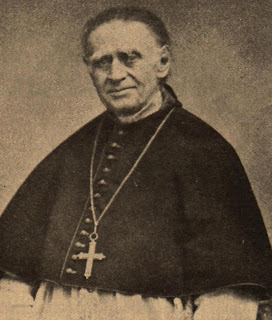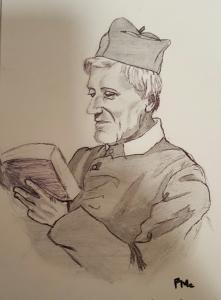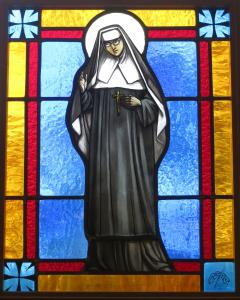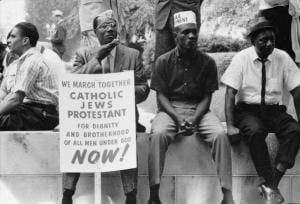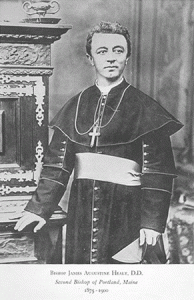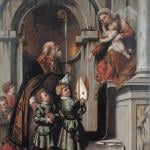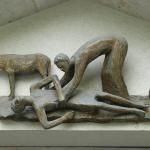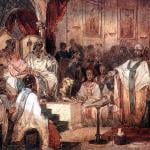Today marks the death of Peter Richard Kenrick (1806-1896), the first Archbishop of St. Louis. Born in Dublin, his older brother Francis (1797-1863) became Archbishop of Baltimore. He studied for the priesthood at St. Patrick’s College, Maynooth, and was ordained in 1832. Not long thereafter he went to Philadelphia, where his brother was Bishop. There he worked as rector of the seminary, Vicar General (the bishop’s second in command), and rector of the cathedral. He even found time to write three books. In 1841 he was named a bishop in St. Louis, where he spent the rest of his life. He was named a coadjutor (auxiliary) with the right of succession. In 1843, he became Bishop of St. Louis. Four years later, when St. Louis was raised to archdiocesan status, Kenrick became an archbishop. Most bishops choose episcopal mottos like “Love One Another” or “Carry Your Cross.” Kenrick’s was Noli Irritare Leonem (“don’t bother the lion”). During the First Vatican Council (1869-1870), when the question of papal infallibility was being discussed, Kenrick led the opposition on the grounds that it was not the right time. He also believed that papal pronouncements could only be infallible if supported by the whole college of bishops. He absented himself from the final vote, and he ended up having an administrator imposed on him for nearly a dozen years. When he got his power back, he intended to keep it. In the early 1890’s, the priests of St, Louis successfully petitioned for a new coadjutor to Kenrick. But Kenrick’s Board of Consultors had to take him to civil court to get him to relinquish his power. At the time of his death he was the oldest member of the American hierarchy.

